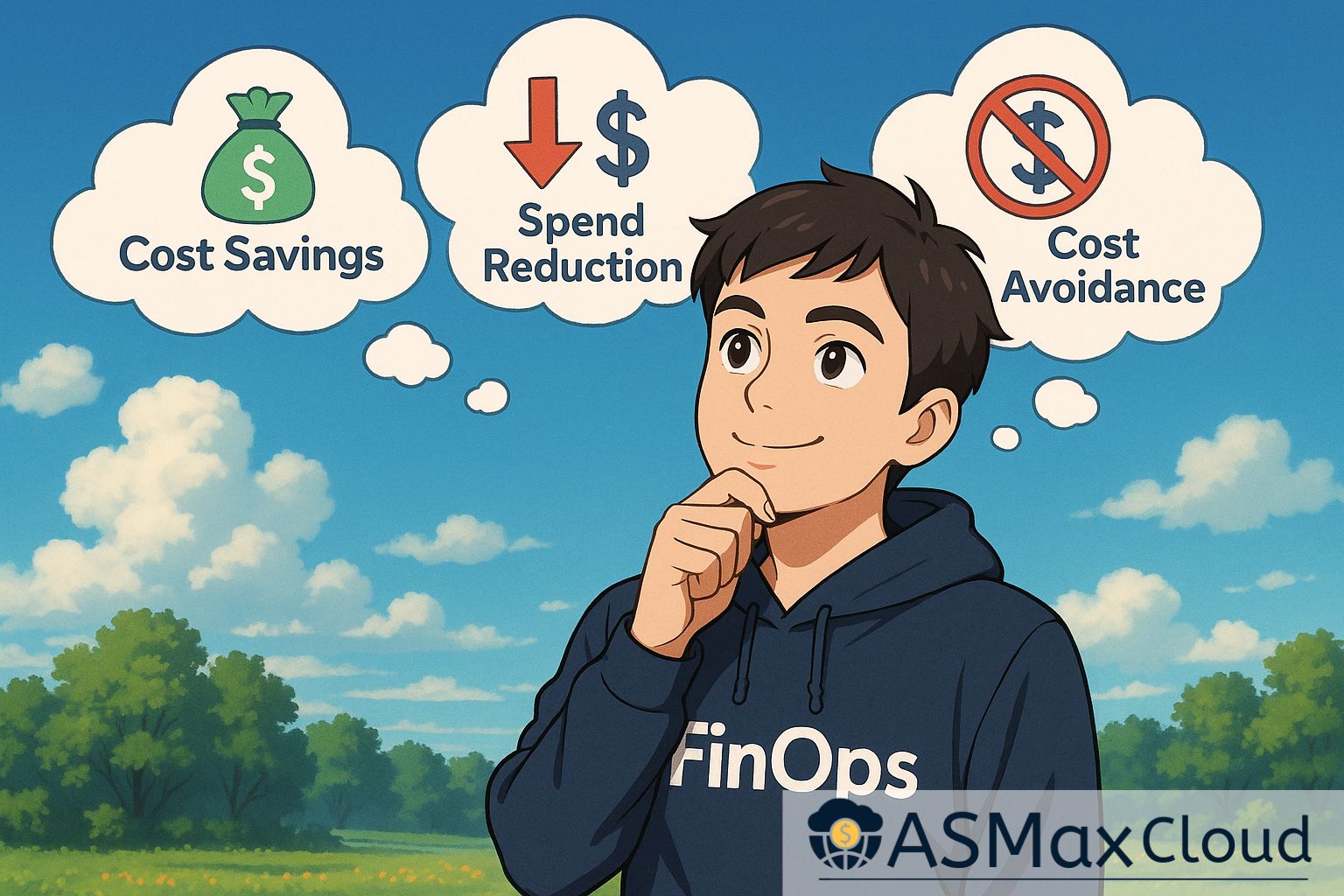The Results of Cloud financial management, can be measured by three distinct pillars: cost savings, spend reduction and cost avoidance. Treating them as interchangeable not only muddies reporting but also misaligns incentives and obscures the true impact of your FinOps initiatives. This article defines each term, explains why precise language matters and presents a robust framework for tracking, measuring and celebrating outcomes.
Defining the Three Outcomes
Cost savings occur when you negotiate or commit to a lower unit price for identical usage. Examples include moving workloads from On-Demand instances to Reserved Instances or Savings Plans. These savings register immediately on your billing statement as the delta between list price and negotiated rate.
Spend reduction captures a genuine drop in resource consumption achieved through operational or behavioral changes. Rightsizing oversized compute workloads, decommissioning idle databases and removing orphaned storage volumes all shrink your monthly outlay without requiring long-term contracts.
Cost avoidance refers to strategic design or governance decisions that prevent expenses before they materialize. Implementing auto-scaling policies to align capacity with demand, enforcing tagging to curb resource sprawl and choosing data architectures that minimize cross-region egress are all examples of proactive measures that avert future charges.
Why Precise Terminology Matters
When every positive outcome is branded “savings,” you lose visibility into what actually drove the improvement. Procurement teams may secure deep discounts yet see no recognition because their wins are lumped together with engineers’ cleanup sprints. Architects who design cost-avoidant patterns miss out on credit because their work never hit the bill.
Accurate language enables you to:
Align incentives by tying compensation or recognition to the right behaviors—rate negotiation for cost savings, operational cleanups for spend reduction and architectural design for cost avoidance.
Report transparently to finance and leadership by categorizing outcomes as operating expense relief, recurring consumption decline or deferred liability.
Prioritize efforts based on highest long-term ROI rather than short-term headline cuts.
Tracking and Measuring Each Category
To avoid conflating outcomes, establish a disciplined measurement approach before launching any initiative.
Baseline measurement
Record pre-initiative metrics for unit cost, consumption volume and projected future usage. For cost savings, capture list pricing and negotiated rates. For spend reduction, log current consumption averages. For cost avoidance, model the bill under a status-quo architecture.Outcome quantification
Calculate cost savings as the difference between list price and actual paid price multiplied by usage. Derive spend reduction by comparing month-over-month consumption volumes after operational improvements. Estimate cost avoidance by subtracting actual spend from the forecasted bill under unchanged design.Granular attribution
Tag every resource with identifiers for project, team and outcome category. Integrate these tags into your cost and usage reporting tool to filter by initiative type. This ensures you can run ad-hoc reports showing exactly which activities drove each category of benefit.
Embedding In-House Processes
A solid framework combines tooling with organizational routines and governance.
FinOps playbook
Document clear definitions for each outcome and provide worked examples. Include formulas, reporting templates and decision trees that guide teams to assign every activity to the correct category.
Governance checkpoints
Integrate outcome reviews into sprint planning and architecture design sessions. Require teams to answer which costs they are saving, reducing or avoiding before approving new features or services.
Review cadence
Hold monthly reviews with engineering, finance and procurement stakeholders. Reconcile reported achievements against actual billing data and adjust baselines or projections as needed.
Automation and tooling
Leverage tagging policies to enforce attribution. Use cost-insight dashboards to highlight areas of unexpected variance. Implement cleanup scripts for idle resources and governance checks in CI/CD pipelines. Integrate alerts for deviation from expected savings or reduction targets.
Celebrating Success and Driving Accountability
Recognition fuels momentum. Publicly acknowledge procurement teams that secure meaningful discounts as cost savings champions. Highlight DevOps squads that drive sustained reductions in consumption. Showcase architects whose designs have a measurable impact on avoiding future costs. Tie each achievement back to the category it belongs in.
By celebrating according to distinct outcomes, you reinforce the right behaviors and cultivate a culture of cost consciousness across the organization. Every team learns not just to cut headlines but to contribute strategically aligned, quantifiable value.
Conclusion
Distinguishing cost savings, spend reduction and cost avoidance elevates cloud financial management from a reactive scramble to a strategic discipline. With precise definitions, rigorous measurement, embedded processes and a culture of recognition, you ensure that every improvement is properly credited and every dollar counts. This clarity drives better decisions, aligns incentives and unlocks the full potential of your FinOps practice.
